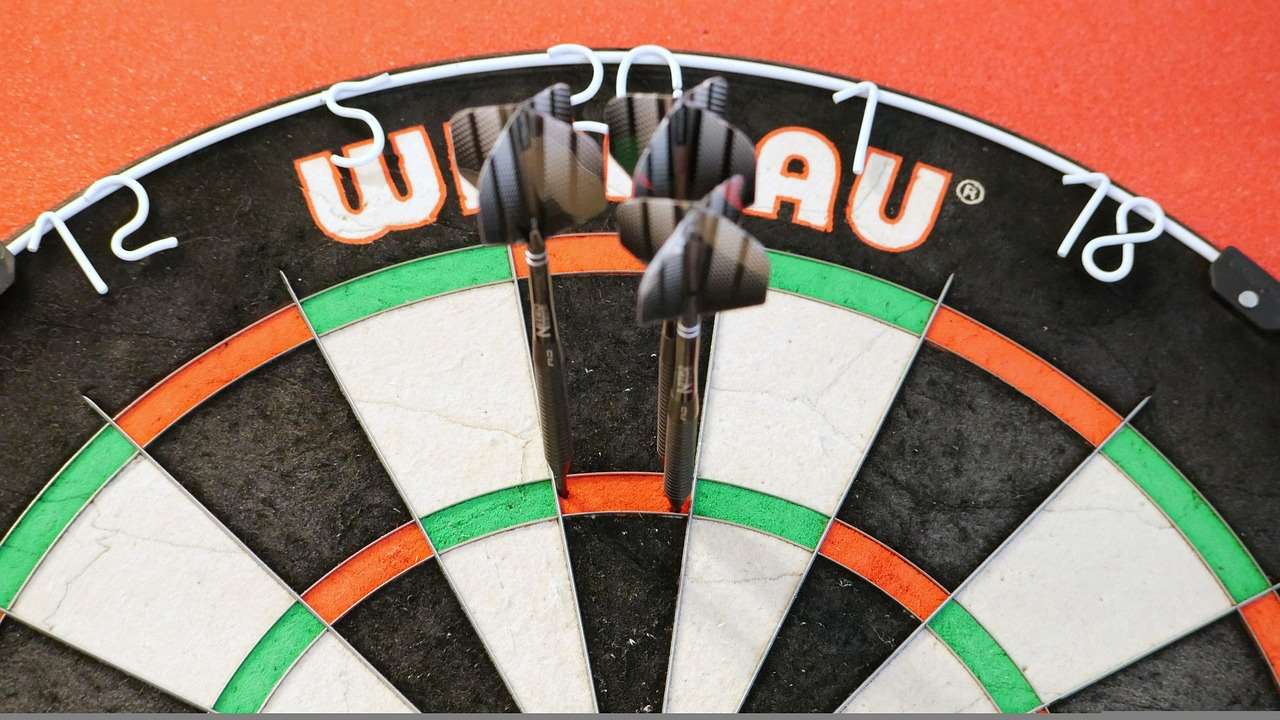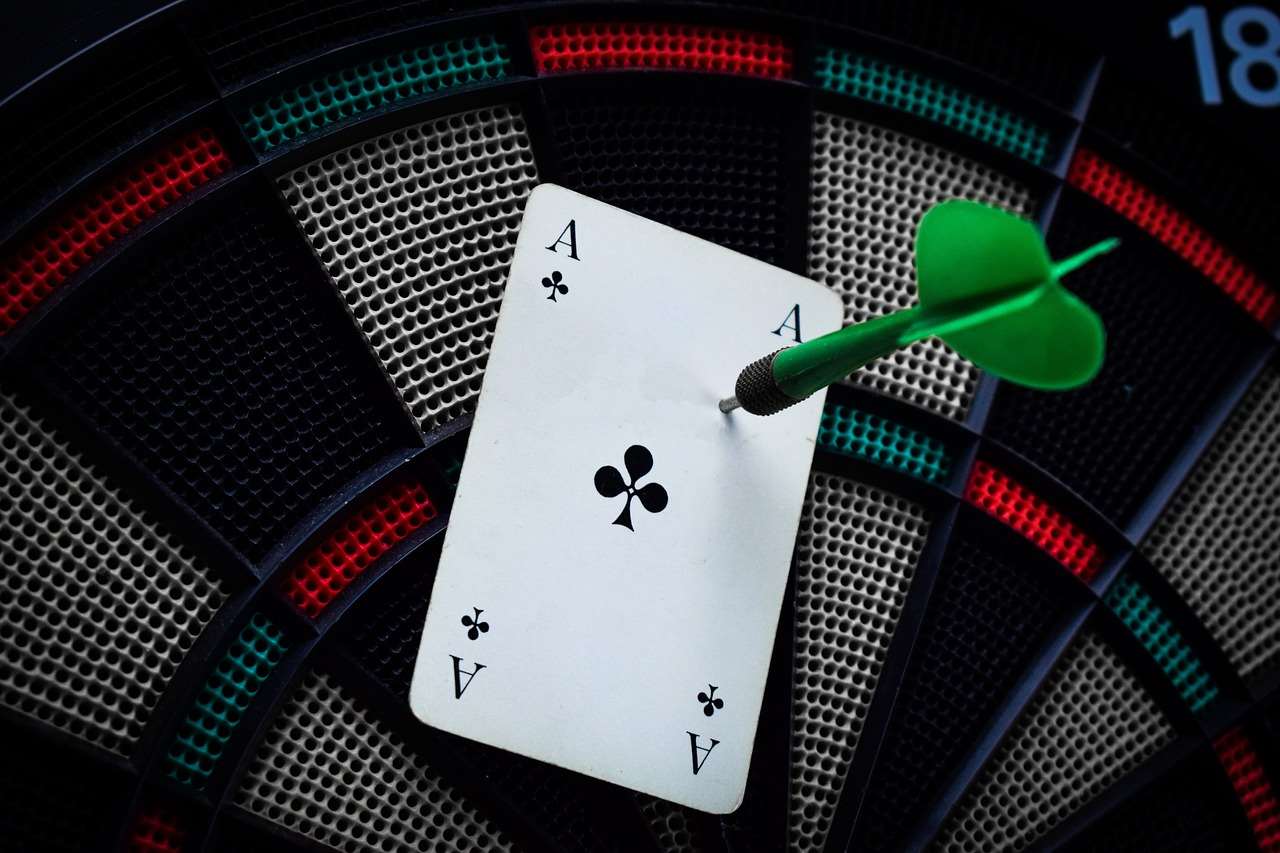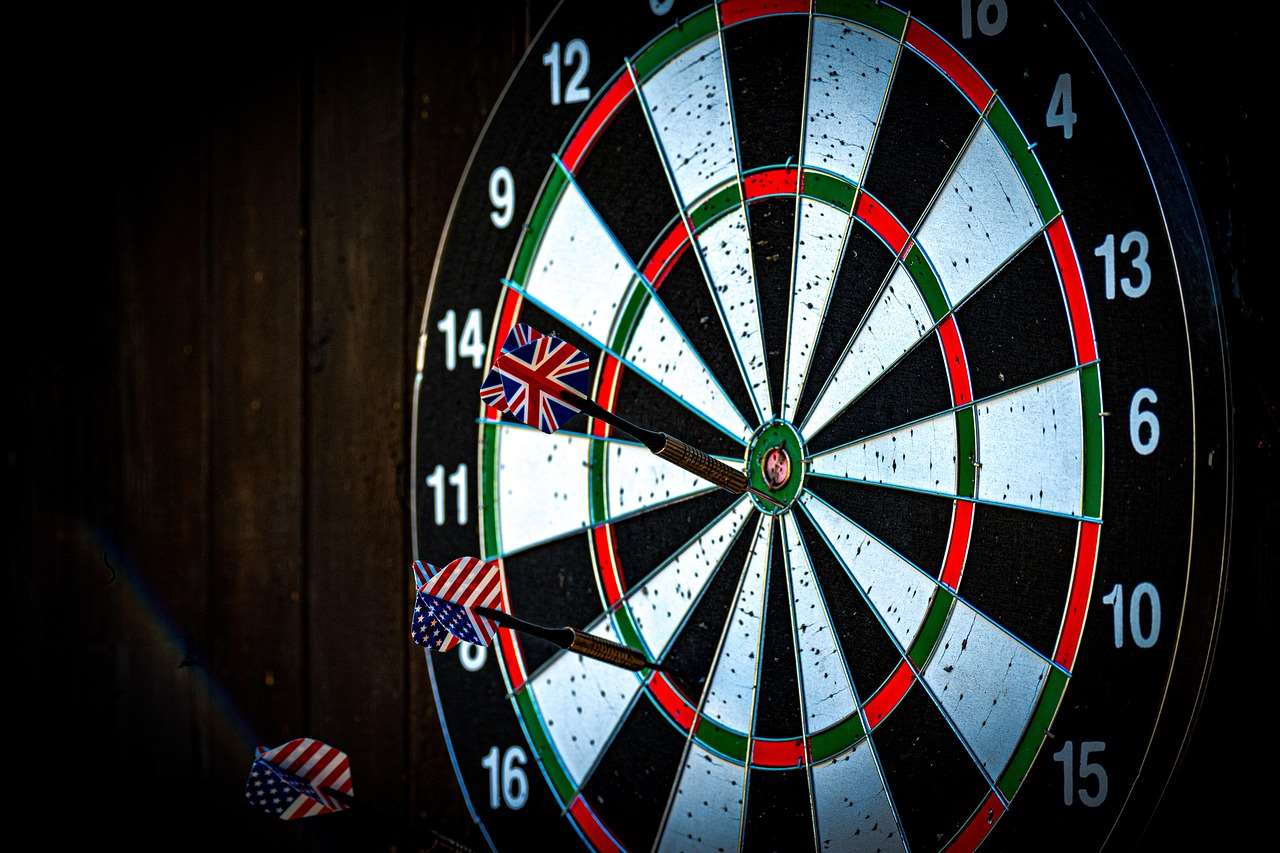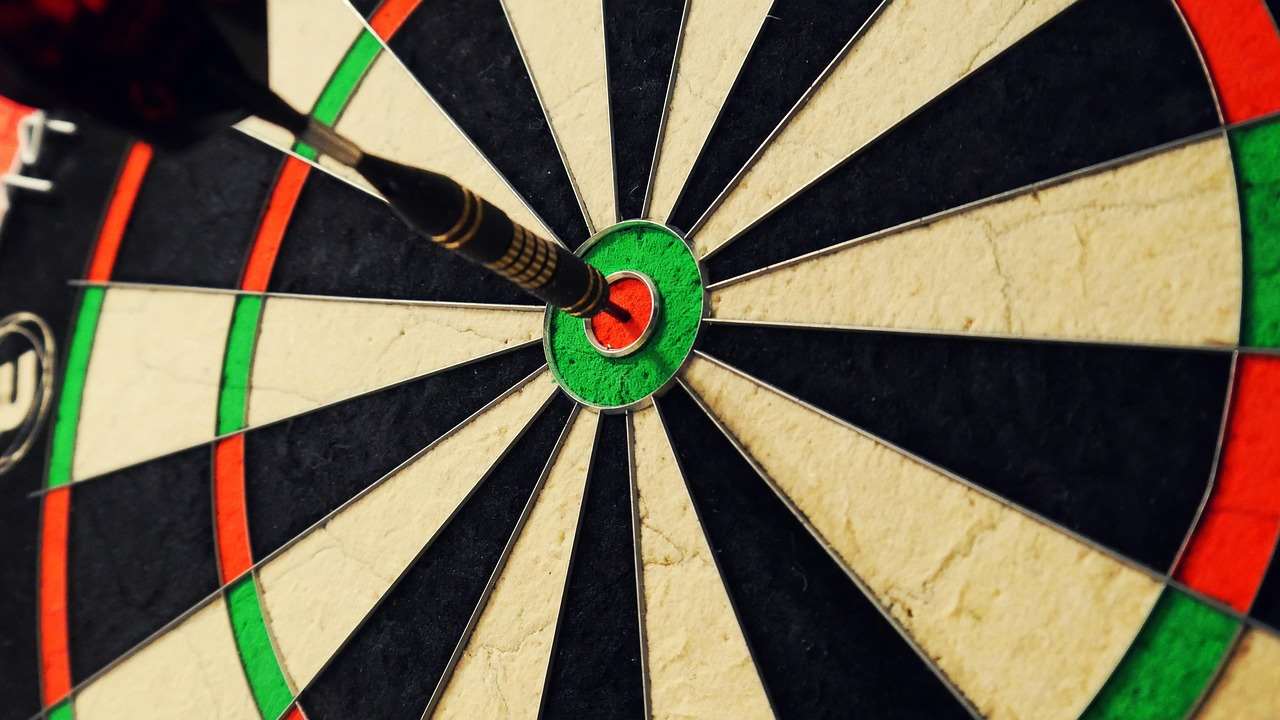The most common way to **decide who goes first in Cricket darts** is a ‘diddle for the middle,’ where players throw one dart each, aiming for the bullseye; the closest gets the advantage. This article will explore the diddle in detail, various alternative methods, and strategies to gain that crucial first-throw advantage.
⚠️ Still Using Pen & Paper (or a Chalkboard)?! ⚠️
Step into the future! The Dart Counter App handles all the scoring, suggests checkouts, and tracks your stats automatically. It's easier than you think!
Try the Smart Dart Counter App FREE!Ready for an upgrade? Click above!
The Classic Diddle for the Middle
The **diddle for the middle** (also known as the “bull shot” or simply “diddle”) is the gold standard for determining who throws first. It’s simple, quick, and generally considered fair. Here’s a breakdown of the process:
- Agreement: Both players (or teams) must agree to use the diddle. This seems obvious, but it’s good sportsmanship to confirm before you begin.
- Throwing Line: Players must throw from behind the official oche (throwing line).
- Taking Turns: Each player throws one dart at the bullseye. Players alternate throws.
- Dart Retrieval: *After* both players have thrown, the darts are retrieved. It’s important to leave the darts in the board until both throws have been made for accurate comparison.
- Measurement: The player whose dart is closest to the bullseye (typically the inner bull) throws first.
- Tiebreakers: If the darts are equally distant, or both miss the board entirely, another diddle is thrown until the tie is broken.

When measuring the distance, use your best judgment. If it’s too close to call, it’s perfectly acceptable (and recommended) to have an impartial third party offer their opinion. If there’s still disagreement, throw again. You can also use a ruler or measuring tape, but this is rarely necessary in casual play.
Tips for a Successful Diddle
While the diddle is straightforward, here are a few tips to increase your chances of winning it:
- Warm-up: Don’t go into a diddle cold. Take a few practice throws to get your arm loose and your eye calibrated.
- Focus: Treat the diddle like any other important throw. Concentrate on your target and block out distractions.
- Consistent Stance: Use your regular throwing stance. Don’t try anything fancy or different just for the diddle.
- Release: A smooth, consistent release is key. Avoid jerky movements.
- Dart Condition: Ensure your dart is in good condition. A bent flight or a loose point can affect its trajectory.
Alternative Methods to Determine First Throw
While the diddle reigns supreme, circumstances may call for alternative methods to determine who throws first. These might be used in casual games, or when playing with players who have difficulty hitting the bullseye. Perhaps you are Adapting darts rules for beginners who are not able to throw at the bullseye.
Coin Flip
The classic coin flip is a simple and unbiased method. One player calls “heads” or “tails,” and the coin is flipped. Winner throws first. This eliminates any skill element, making it purely a matter of chance.
Rock, Paper, Scissors
This childhood game is another fun and random way to decide. It’s quick, easy, and adds a bit of playful competition before the real game begins. Best two out of three can also work to make it a little less luck-based.
Highest Number on One Dart
Each player throws one dart at the board aiming for any number. The player who hits the highest numbered segment throws first. This method is especially useful when playing with beginners or children who struggle with the bullseye. This method also allows players to practice their dart throwing technique.

Closest to a Specific Number
Similar to the diddle, players can agree on a specific number other than the bullseye (e.g., 20). Each player throws one dart, and the player closest to that number gets to throw first. This can be a good option if the bullseye area is worn or damaged. Learning **How to decide who goes first in Cricket darts** involves understanding all these options.
Agreed-Upon Challenge
For a bit more fun, players can agree on a mini-challenge. For example, the first person to name three types of dart flights, or correctly answer a trivia question, gets to throw first. This adds an element of skill or knowledge to the decision.
The Importance of Throwing First in Cricket Darts
In Cricket darts, throwing first can provide a significant advantage. Understanding **How to decide who goes first in Cricket darts** is important because the first player to mark a number has control over that number. This allows them to dictate the pace of the game and put pressure on their opponent. Let’s look at how.
Establishing Control
The first player can choose which numbers to open based on their strengths and their opponent’s weaknesses. They can focus on numbers they are comfortable hitting consistently, while potentially avoiding numbers their opponent excels at. The choice of numbers is key to **Alternative darts rules for home play**.
Applying Pressure
By opening numbers and scoring quickly, the first player can force their opponent to play defensively. The opponent may need to focus on closing numbers to prevent the first player from racking up a large point lead, rather than playing their own offensive game.

Strategic Number Selection
A skilled player will choose numbers strategically based on the game situation. For example, they might prioritize numbers with a higher multiplier potential (like 20 or 19) to score quickly, or they might focus on numbers that are difficult to close to control the board.
Psychological Advantage
Winning the diddle and throwing first can also provide a psychological advantage. It can boost confidence and create a sense of control, potentially affecting the opponent’s performance.
Does Throwing First Guarantee Victory?
While throwing first offers a definite advantage, it’s by no means a guarantee of victory. Skill, strategy, and consistency are still crucial factors. A player who throws first but makes numerous mistakes can easily be overtaken by a more skilled and consistent opponent.
The Importance of Accuracy and Consistency
Regardless of who throws first, consistent accuracy is paramount. A player who can consistently hit their target numbers will always have a better chance of winning, even if they don’t have the initial advantage.
Strategic Closing
Closing numbers effectively is just as important as opening them. A player who can strategically close numbers to deny their opponent scoring opportunities can quickly turn the tide of the game. This requires a good understanding of **Basic Darts Fundamentals for Beginners**.

Adapting to the Game Situation
The ability to adapt to the game situation is also critical. A player who can adjust their strategy based on their opponent’s play and the current score will have a significant advantage, regardless of who threw first. This also ties into How to make darts fairer with handicap rules, ensuring a level playing field.
The Art of the Comeback
Even if a player starts second and falls behind, a comeback is always possible. Here are some tips for staging a successful comeback in Cricket darts:
- Stay Focused: Don’t get discouraged by being behind. Maintain your focus and concentrate on hitting your targets.
- Target Key Numbers: Focus on closing key numbers to deny your opponent scoring opportunities.
- Capitalize on Mistakes: Be ready to capitalize on any mistakes your opponent makes.
- Change Your Strategy: If your initial strategy isn’t working, be willing to adjust it.
- Maintain a Positive Attitude: A positive attitude can make a big difference in your performance.
Practice Makes Perfect
Ultimately, the best way to improve your chances of winning at Cricket darts is to practice regularly. The more you practice, the more consistent you’ll become, and the better you’ll be able to handle any game situation. You could even try some Fun dart game variations with modified rules to sharpen your skills.
Drills for Accuracy
Focus on drills that improve your accuracy on specific numbers. Practice hitting doubles and triples, as well as closing numbers quickly. Aim for the numbers that are important to you or your opponent to improve your odds of winning.

Game Simulation
Simulate game situations in your practice sessions. Play against yourself or a practice partner, and try to replicate the pressure and challenges of a real game. Consider doing something simple like keeping a notebook to see how you are throwing.
Mental Preparation
Work on your mental preparation as well. Visualize yourself hitting your targets, and develop strategies for staying focused and calm under pressure. Consider taking breaks or breathing exercises to assist in maintaining your mental clarity.
Conclusion
**How to decide who goes first in Cricket darts** is usually determined by the diddle for the middle, but alternative methods like a coin flip or rock-paper-scissors exist for casual play. While throwing first provides a tactical and psychological advantage, it doesn’t guarantee victory. Ultimately, accuracy, strategic closing, and adaptability determine the winner. So, practice your aim, develop a smart strategy, and get ready to dominate the dartboard! Now, grab your darts and put these tips into practice!
Hi, I’m Dieter, and I created Dartcounter (Dartcounterapp.com). My motivation wasn’t being a darts expert – quite the opposite! When I first started playing, I loved the game but found keeping accurate scores and tracking stats difficult and distracting.
I figured I couldn’t be the only one struggling with this. So, I decided to build a solution: an easy-to-use application that everyone, no matter their experience level, could use to manage scoring effortlessly.
My goal for Dartcounter was simple: let the app handle the numbers – the scoring, the averages, the stats, even checkout suggestions – so players could focus purely on their throw and enjoying the game. It began as a way to solve my own beginner’s problem, and I’m thrilled it has grown into a helpful tool for the wider darts community.